Bio Farming
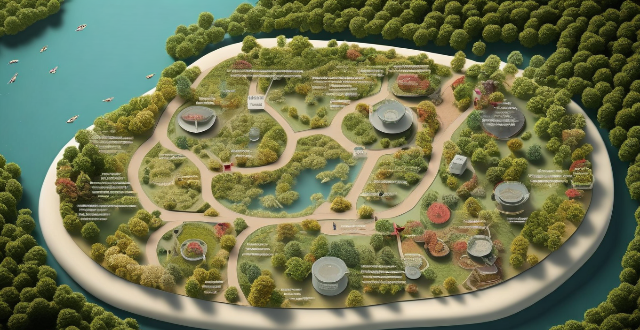
How does organic farming benefit the environment ?
Organic farming is an agricultural system that emphasizes the use of natural resources and avoids synthetic chemicals such as pesticides, herbicides, and fertilizers. This method of farming has numerous benefits for the environment, including reduced pollution, improved soil health, increased biodiversity, energy conservation, and water conservation. By choosing organic products, consumers can support these environmentally friendly practices and help to create a more sustainable future.

How can I support local and organic farming ?
Supporting local and organic farming is crucial for the environment, sustainable agriculture, and community development. To contribute, you can buy local and organic products, volunteer or participate in farming activities, and educate yourself and others about sustainable practices. By making informed choices, you can make a significant impact on supporting local and organic farming.
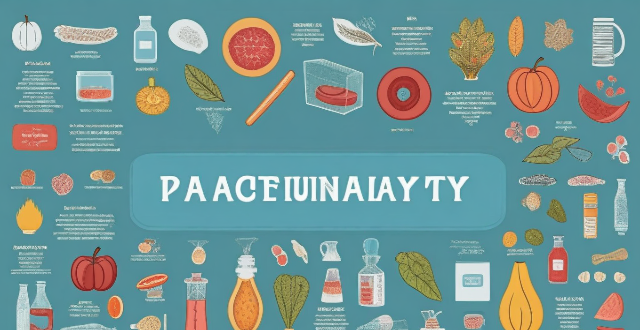
How do agricultural practices influence biodiversity ?
Agricultural practices significantly impact biodiversity, affecting ecosystem services like pollination and soil health. Monoculture reduces biodiversity due to habitat loss and pesticide use, while polyculture enhances it through diverse habitats and reduced chemical inputs. Organic farming benefits biodiversity by avoiding synthetic chemicals and promoting natural pest control, whereas conventional farming can harm it through pesticide toxicity and nutrient runoff. Land management practices like tillage disrupt soil ecosystems, while no-till farming preserves them. Water management also plays a role; sustainable practices like drip irrigation conserve water resources and support aquatic life. Adopting sustainable agricultural methods can help conserve biodiversity while maintaining productive systems.

How do organic foods affect taste and nutrition ?
Organic foods have become increasingly popular due to concerns about health, environment, and sustainability. The article discusses the impact of organic farming on the taste and nutrition of food. It suggests that organic foods may have a richer flavor profile due to slower growth rates and no artificial flavorings. However, studies have shown mixed results regarding the nutrient content of organic versus non-organic foods. While some studies suggest higher levels of certain nutrients in organic produce, others find no significant difference. Additionally, organic farming practices aim to reduce pollution, conserve water, and promote biodiversity, contributing to a healthier planet. Ultimately, personal preference, budget, and individual health goals will play a role in deciding whether to opt for organic options.
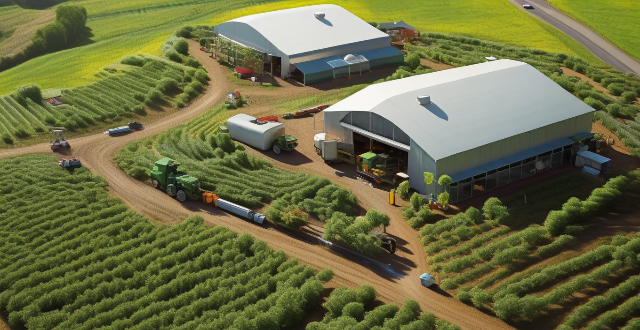
What role do sustainable farming practices play in maintaining food security amidst changing climate conditions ?
Sustainable farming practices are crucial for maintaining food security amidst changing climate conditions. They help farmers adapt to these changes by enhancing soil health, improving water management, promoting crop diversification, and integrating livestock and crop production. These practices also mitigate the impacts of climate change on agriculture by reducing greenhouse gas emissions, promoting biodiversity, and encouraging renewable energy use. Supporting smallholder farmers through training, access to markets, and cooperatives is essential for implementing sustainable practices at a larger scale. Overall, sustainable farming practices are vital for building resilient agricultural systems that can withstand climate change while ensuring food security for future generations.
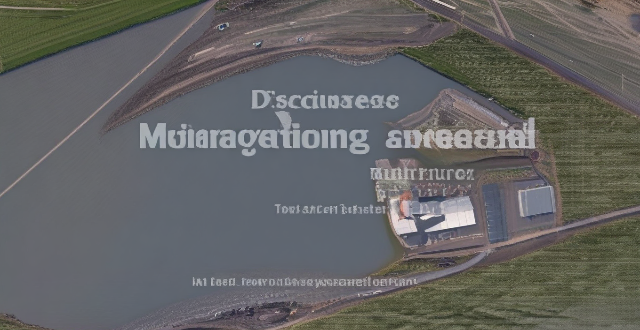
What are some emerging trends in the field of energy storage materials research ?
The text discusses the latest trends in energy storage materials research, focusing on solid-state batteries, flow batteries, metal-air batteries, supercapacitors, redox flow batteries, hybrid energy storage systems, nanostructured materials, smart grid integration, thermal energy storage, and organic/bio-based materials. Each section provides a brief overview of the technology's advantages and current research challenges.

How much does it cost to obtain a tourist visa ?
This detailed guide outlines the cost implications and requirements for obtaining a tourist visa to the People's Republic of China as of July 2024, using the process in the United States as an example. The guide covers visa types, required documents, additional requirements, cost implications, and the application procedure. It also highlights recent simplifications in the document requirements and emphasizes the importance of meeting all specified requirements and being prepared for associated costs.
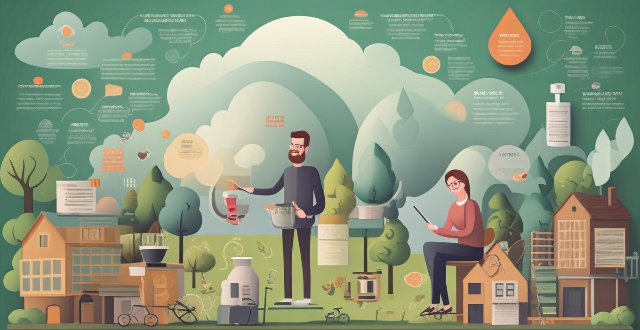
What are some innovative solutions for mitigating the effects of climate change on biodiversity ?
Climate change poses a significant threat to biodiversity, but there are several innovative solutions that can help mitigate its effects. These include protecting and restoring habitats, promoting sustainable land use practices, encouraging biodiversity-friendly farming practices, supporting indigenous communities, investing in research and technology, and promoting education and awareness. By implementing these strategies, we can create more resilient ecosystems that are better able to withstand the impacts of climate change.

What is the connection between biodiversity and food security ?
The connection between biodiversity and food security is crucial, as biodiversity contributes to crop pollination, natural pest control, soil health, and genetic resources for crop improvement. Loss of biodiversity can lead to reduced crop yields, increased use of pesticides, loss of genetic diversity, and economic impacts on farmers. Sustainable agriculture practices such as agroforestry, conservation agriculture, integrated pest management, and crop rotation/intercropping can help maintain biodiversity while ensuring food security.

What is biodiversity and why is it important ?
Biodiversity is the variety of life on Earth, including ecosystems, species, and genetic variation within species. It plays a vital role in supporting ecosystem services, ensuring food security, providing medicinal resources, enriching cultural heritage, and enhancing resilience to environmental changes. The loss of biodiversity can lead to reduced ecosystem function, increased vulnerability, economic impact, and loss of future options. Protecting biodiversity involves habitat protection, sustainable use, legislative measures, public awareness, and research and monitoring. Conserving biodiversity is essential for maintaining the balance of ecosystems and ensuring that future generations can enjoy the benefits provided by the variety of life on Earth.
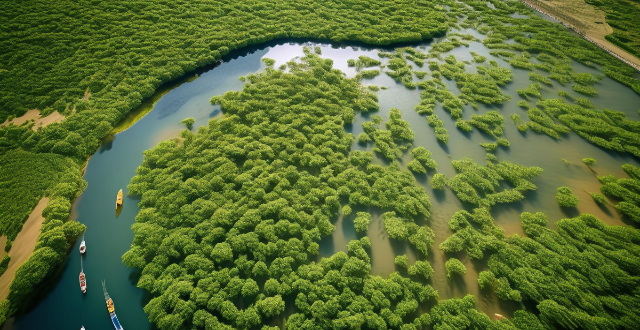
How does biodiversity affect ecosystem services ?
Biodiversity plays a vital role in ecosystem services, including provisioning (like food and water), regulating (climate and flood control), cultural (recreational and spiritual enrichment), and supporting services (soil formation and nutrient cycling). Diverse plant species ensure resilience against pests and diseases, reducing the need for chemical interventions. Wetlands with varied vegetation types can more effectively filter pollutants from water than those with limited plant diversity. Different plant species play roles in carbon sequestration through photosynthesis, leading to more efficient carbon uptake and storage. Biodiversity can help regulate diseases by reducing the likelihood of pathogen spread. Diverse environments like coral reefs or tropical rainforests offer richer experiences for activities such as diving, hiking, and birdwatching. A variety of organisms, including bacteria, fungi, and earthworms, contribute to soil formation and maintenance, which is essential for plant growth. Different species have specialized roles in the cycling of nutrients. High biodiversity means functions can be performed by multiple species, providing a safety net if one species fails. Conservation efforts aimed at protecting and restoring biodiversity are vital for the sustained health of our planet's ecosystems.

How do celebrities manage their online presence and reputation on social media ?
Celebrities manage their online presence and reputation on social media by hiring a social media manager, maintaining consistency across platforms, engaging with fans, promoting positive messages, handling criticism gracefully, and monitoring their image. These strategies help them maintain a positive online presence while connecting with fans and promoting their work effectively.

How do celebrities establish and maintain a successful personal brand ?
Celebrities establish and maintain a successful personal brand by defining their brand persona, building a strong online presence, being consistent in messaging and imagery, networking and collaborating with others, staying true to themselves, and continuously learning and evolving. A strong personal brand helps celebrities stand out in their industry and build a loyal fan base.

Can technology help improve food security in a changing climate ?
In the face of climate change, technology offers numerous solutions to enhance food production and distribution, contributing to global food security. Key areas where technology can make a significant impact include precision farming, genetic engineering, data analytics, water management, digital infrastructure, supply chain optimization, urban agriculture, and policy support. By leveraging these technological advancements, we can mitigate the adverse effects of climate change on agriculture and ensure a stable and sustainable food system for all.

What are the benefits of organic food ?
The provided text discusses the various benefits of organic food. The key advantages include: 1. **Health Benefits**: - No harmful chemicals, higher antioxidant levels, better nutritional content, and reduced risk of antibiotic resistance. 2. **Environmental Benefits**: - Sustainable farming practices, reduced pollution, lower energy consumption, and carbon sequestration. 3. **Economic Benefits**: - Supporting local farmers, creating job opportunities, long-term cost savings, and market diversity. Overall, choosing organic food contributes to personal health, environmental sustainability, and economic growth.

What is the difference between natural and organic food ?
Difference Between Natural and Organic Food Natural food is minimally processed with no artificial additives, while organic food follows strict production standards without synthetic pesticides or GMOs. Organic farming promotes soil health and biodiversity, offering potential environmental benefits.

What is the impact of climate change on agricultural employment ?
Impact of Climate Change on Agricultural Employment: - Reduced Crop Yields due to droughts, floods, and loss of biodiversity can lead to job losses. - Changes in Cropping Patterns, such as shifting to new crops or shortened planting seasons, may require different skillsets and reduce employment opportunities. - Increased Pest and Disease Pressure can result in more labor for monitoring and management but also potential job losses from crop failures. - Infrastructure Damage and Displacement caused by extreme weather events can affect farming operations and employment levels. - Adaptation and Resilience Efforts, including developing resilient crop varieties and adopting sustainable farming practices, can create new job opportunities.

What role does technology play in addressing climate change in agriculture ?
Technology plays a crucial role in addressing climate change in agriculture through precision farming, drought-tolerant crops, soil health management, livestock management, energy efficiency and renewable energy, and climate data analysis and modeling. These technologies help farmers adapt to changing weather patterns, improve crop yields, reduce greenhouse gas emissions, and increase the efficiency of resource use.

Is it worth paying extra for organic food ?
Organic food has become increasingly popular in recent years, with many people opting to pay extra for these products. In this article, we explore the benefits and drawbacks of organic food to help you make an informed decision. Benefits of Organic Food: - Healthier and more nutritious, with no pesticides or chemicals and higher nutrient content. - Environmental impact is reduced through sustainable farming practices that promote soil health and reduce pollution. - Animal welfare standards are higher, with better living conditions for animals and no antibiotics or hormones used in meat and dairy products. Drawbacks of Organic Food: - Higher cost due to higher production costs and limited availability in some areas. - Quality consistency can be inconsistent, with no guarantee of high quality in every product. - Shorter shelf life can lead to waste if not consumed quickly enough. Whether or not it is worth paying extra for organic food depends on personal preferences, budget constraints, and availability. Consider your own priorities and make an informed decision based on those factors.
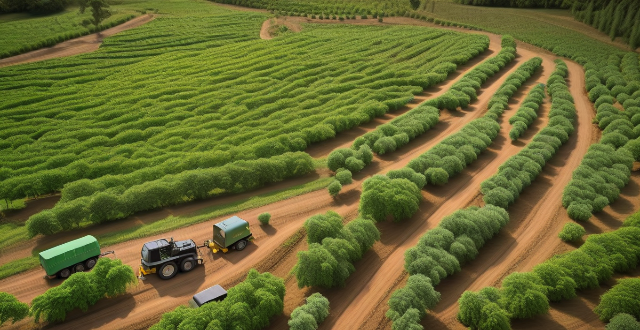
How do different regions around the world cope with climate change-related threats to their food sources ?
Coping with Climate Change: Global Strategies for Food Security explores how various regions are adapting agricultural practices to ensure food security amidst climate change. Asia is focusing on modernizing irrigation systems and researching drought-resistant crops. Africa is promoting small-scale farming techniques and agroforestry. Europe is utilizing precision farming and developing climate-smart crops. North America is practicing rotational grazing and using genetic engineering for more resilient crops. South America is embracing agroecology and community-based adaptation. Australia and Oceania are managing soil salinity issues and heat tolerance research. Policy initiatives include improving access to finance for smallholder farmers and establishing regulatory frameworks. Community-level actions involve farmer training programs and local innovations like community gardens. Technology adoption includes mobile apps for weather information and remote sensing for crop monitoring. The conclusion emphasizes the importance of combining traditional knowledge with modern technology to address climate change and ensure global food security.
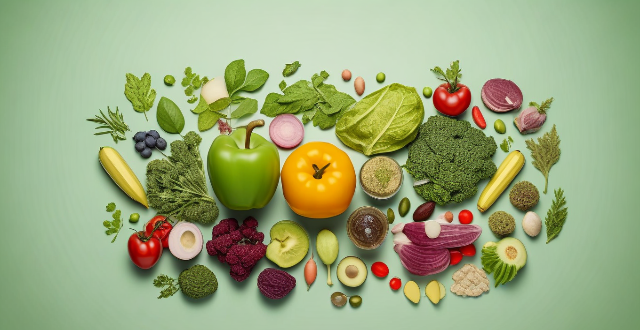
Are organic foods safer than conventionally grown foods ?
The article discusses the pros and cons of organic versus conventionally grown foods, including factors such as pesticide use, nutrient content, cost, availability, and environmental impact. While organic foods offer benefits in terms of reduced exposure to synthetic chemicals and potentially higher nutrient content, they also come with higher costs and limited availability. Conventionally grown foods are often more affordable and widely available but may contain lower levels of certain nutrients and pose potential risks from exposure to synthetic chemicals. The choice between organic and conventional foods ultimately depends on individual preferences and priorities when it comes to health, affordability, and environmental impact.

Is organic food healthier than non-organic food ?
The debate over whether organic food is healthier than non-organic food has been ongoing for decades. While some argue that organic food offers more nutritional benefits and is better for the environment, others believe that the differences are negligible and that non-organic food can be just as healthy. In this article, we will explore both sides of the argument and try to answer the question: is organic food healthier than non-organic food? Arguments in favor of organic food include nutritional benefits, pesticide reduction, and environmental impact. Organic farming practices focus on building healthy soil and growing strong plants, which results in produce that is richer in nutrients like vitamins, minerals, and antioxidants. Additionally, organic food is grown without the use of synthetic pesticides and fertilizers, reducing the risk of harmful chemicals ending up in our food supply. Finally, organic farming practices promote biodiversity, reduce pollution, and help preserve natural resources. Arguments against organic food include minimal nutritional differences, low pesticide residues, and higher cost. While some studies have found that organic food is more nutritious than non-organic food, other research suggests that the differences are minimal. The levels of pesticides found in non-organic produce are generally well below what is considered safe by regulatory agencies, and washing produce thoroughly can further reduce pesticide residues. However, one of the biggest drawbacks of organic food is its higher cost compared to non-organic options. Ultimately, the decision of whether to choose organic or non-organic food depends on personal preference and individual circumstances. If you prioritize nutrition, reducing your exposure to pesticides, and supporting environmentally friendly farming practices, then organic food may be the way to go. However, if you are concerned about cost or believe that the nutritional differences between organic and non-organic food are minimal, then non-organic options may be suitable for you.
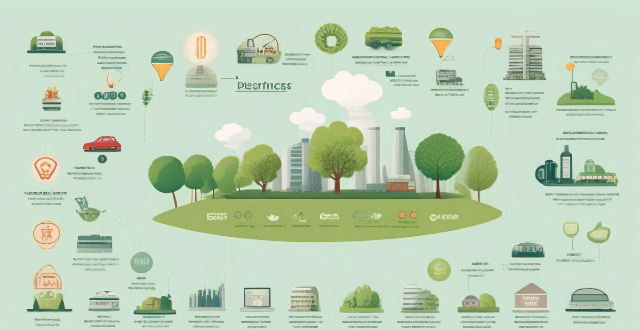
What industries have the most potential for developing climate-friendly products ?
The text discusses the potential of various industries in developing climate-friendly products. The industries mentioned include renewable energy, transportation, building industry, and agriculture. The renewable energy industry has great potential due to sources like solar, wind, hydroelectric, geothermal, and biomass energy. The transportation industry can develop electric vehicles, hybrid vehicles, and public transportation systems powered by renewable energy sources. The building industry can use green building materials, energy-efficient appliances, and smart home technology. The agriculture industry can adopt sustainable farming practices and produce eco-friendly food products. Investing in these industries and promoting sustainable practices can help mitigate the effects of climate change.
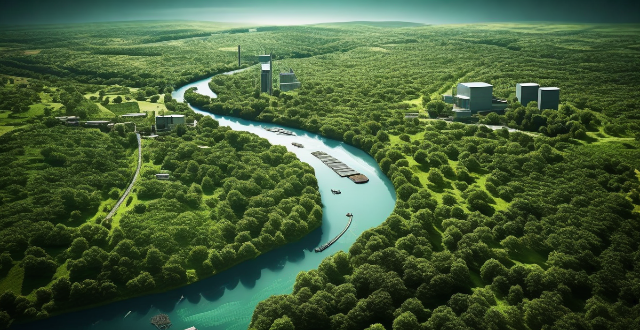
What are some successful initiatives that have addressed both climate change and poverty ?
Successful initiatives addressing climate change and poverty include renewable energy projects, energy efficiency programs, sustainable agriculture practices like agroforestry and organic farming, forest conservation and reforestation programs, green microfinance and green bonds, as well as waste management and recycling programs. These efforts not only reduce carbon emissions but also create job opportunities and improve the livelihoods of impoverished communities, contributing to a more equitable world while protecting the planet for future generations.
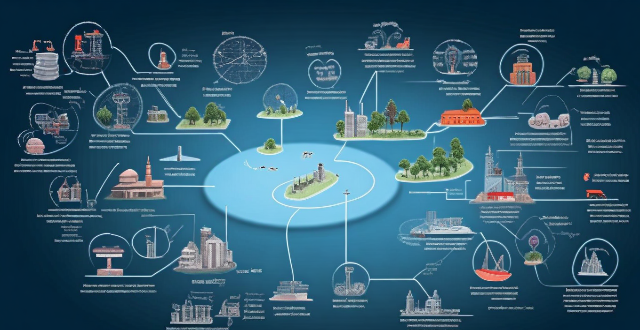
What are the potential solutions for climate change in agriculture ?
This article explores potential solutions for climate change in agriculture, including sustainable farming practices, water management, crop diversification and rotation, livestock management, energy efficiency and renewable energy, carbon offsetting and sequestration, research and development, and policy interventions. These solutions aim to mitigate the impacts of climate change on crop yields, water availability, and biodiversity, and help build a more resilient and sustainable agricultural sector capable of adapting to changing climate conditions.

How do climate targets impact agricultural practices ?
Climate targets set by governments and international organizations play a significant role in shaping agricultural practices. These targets aim to reduce greenhouse gas emissions, promote sustainable development, and mitigate the impacts of climate change. The following are some ways in which climate targets impact agricultural practices: 1. Shifting towards Sustainable Farming Methods One of the primary impacts of climate targets is the shift towards more sustainable farming methods. This includes practices such as conservation tillage, integrated pest management, cover cropping, and agroforestry. 2. Adoption of Renewable Energy Sources To meet climate targets, farmers are encouraged to adopt renewable energy sources for their operations. This can include solar power, wind energy, and bioenergy. 3. Changes in Crop Choices and Rotations Climate targets may also lead to changes in crop choices and rotations to adapt to changing environmental conditions and reduce the carbon footprint of agriculture. This can involve planting perennial crops, diversifying crop rotations, and selecting climate-resilient crops. 4. Improved Water Management Water is a critical resource for agriculture, and climate targets often focus on improving water management to reduce water usage and protect water resources. This can involve dripper irrigation, rainwater harvesting, and planting water-efficient crops. 5. Carbon Sequestration and Soil Health Maintaining healthy soils is essential for mitigating climate change, as soils can act as carbon sinks. Climate targets encourage practices that improve soil health and increase carbon sequestration, such as composting, reduced tillage, and intercropping.
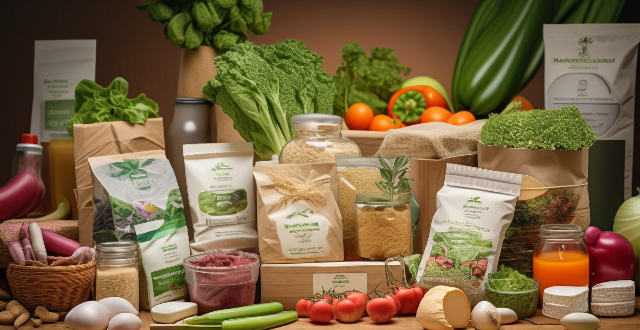
How do I know if a product is truly organic ?
Identifying truly organic products requires looking for certification labels, checking the ingredient list, researching the manufacturer or brand, and visiting farmers markets and local stores. Certification labels such as USDA Organic, Euro-leaf, and JAS indicate that the product meets specific standards for organic production. The ingredient list should indicate that all ingredients are organic and free from GMOs. Researching the manufacturer or brand can provide information about their farming practices and quality control processes. Visiting farmers markets and local stores allows you to ask questions about the products and see them firsthand. By following these tips, you can ensure that you are getting genuine organic products that are free from harmful chemicals and pesticides.

What are the primary sources of greenhouse gas emissions ?
Greenhouse gas emissions are a major contributor to global warming and climate change, with the primary sources being fossil fuels, deforestation, industrial processes, and agriculture. Fossil fuels release carbon dioxide into the atmosphere when burned, while deforestation releases stored carbon from trees. Industrial processes often use fossil fuels or other materials that produce CO2 and other greenhouse gases like methane and nitrous oxide. Agriculture also contributes to emissions through livestock farming, fertilizer use, and changes in land use leading to deforestation and soil degradation.
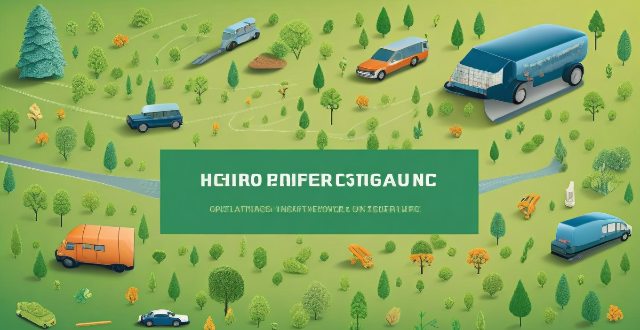
How can climate and environmental policies be integrated with other policy areas, such as transportation, energy, and agriculture ?
The text provides an overview of how climate and environmental policies can be integrated with other policy areas, focusing on transportation, energy, agriculture, and cross-sector collaboration. In transportation, promoting sustainable systems includes investing in public transportation, electric vehicles, and biking/walking paths, while encouraging green commuting habits involves telecommuting and carpooling. In the energy sector, transitioning to renewable sources involves setting standards, offering subsidies, and investing in R&D, while improving efficiency includes stricter building codes and appliance standards. In agriculture, sustainable practices involve organic farming and water management, while reducing methane emissions includes better livestock management and using anaerobic digesters. Cross-sector collaboration emphasizes policy coordination, research and innovation, and financing and investment strategies. The conclusion highlights the importance of a comprehensive approach that combines regulatory measures, financial incentives, educational campaigns, and collaborative efforts for creating a more sustainable future.

How can we conserve and protect biodiversity in our local communities ?
The text discusses the importance of biodiversity and provides various ways to conserve and protect it in local communities. It suggests creating awareness through education, using media platforms, practicing sustainable living by reducing waste and conserving energy, protecting habitats by preserving natural areas and controlling invasive species, supporting local conservation efforts through volunteering and advocating for policies, and promoting eco-friendly practices in businesses. The goal is to contribute to a healthier planet by taking small actions towards biodiversity conservation.